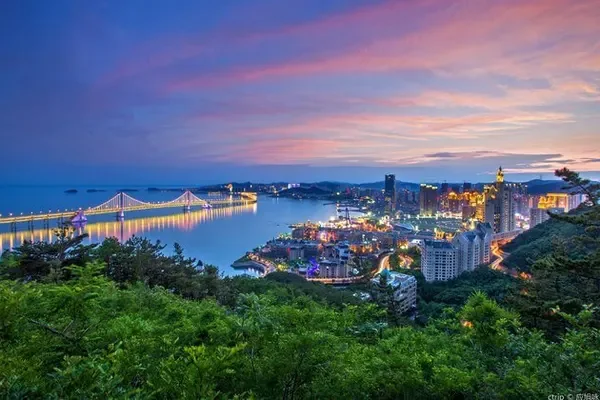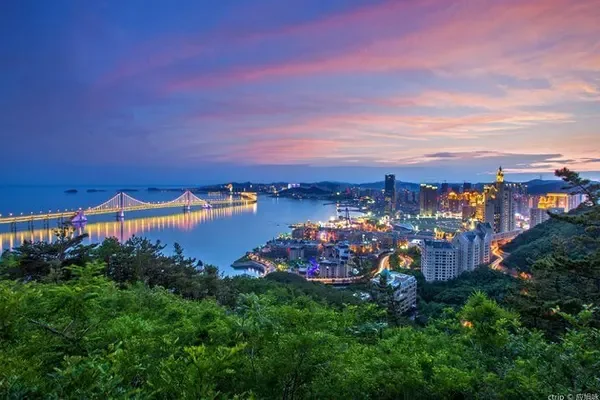National Museum of China, one of the top ten buildings
In order to welcome the 10th anniversary of the founding of the People's Republic of China, in the 1950s, the Central People's Government decided to build a large-scale construction project in the capital Beijing. The construction of the "Ten Beijing Buildings" can also be regarded as the top ten national buildings at that time. The Chinese History Museum and the Chinese Revolution Museum are One of them is the National Museum of China today.
Coming out of Tiananmen East Subway Station is the north gate of the National Expo. Tickets are free but need to be reserved in advance. I think whether you come to Beijing for a check-in tour or an in-depth cultural tour, the National Expo is a must-see place. First of all, the building itself is very magnificent, and secondly, the permanent exhibitions "Ancient China" and "Road to Revival" inside are definitely worth seeing. There are many things in history textbooks in the library, and it is actually impossible to read them all in one day.


After exiting the west gate of the National Museum, walking south is the west entrance of Dongjiaomin Lane.
The predecessor of Sanlitun - Dongjiaomin Lane
Dongjiaomin Lane is a place that cannot be ignored in the modern history of China. It has a total length of 1552 meters. In modern times, it used to be a famous embassy district. After the Second Opium War in 1860, Britain, France, the United States, Russia, Japan, Germany, Belgium and other countries successively established embassies in Dongjiaomin Lane, and Dongjiaomin Lane was renamed Embassy Street. After 1949, Dongjiaomin Lane was still used as the embassy area. Until 1959, all embassies were moved to the embassy area around Sanlitun outside Chaoyangmen.
During the Boxer Rebellion, because this was where foreigners gathered in the embassy area, it also became the key area for the Boxers to attack. There was a nursery rhyme that said, "If you eat noodles without vinegar, you can beat Xishiku; if you eat noodles without sauce, you can beat Jiaomin Lane." . After the Boxer Movement, according to the "Xin Chou Treaty", Dongjiang Mi Lane was renamed Legation Street (Embassy Street). It was officially renamed Dongjiaomin Lane in the map drawn by the Chinese side, and became the embassy district managed by each embassy. In the government office on the street, only the three departments of officials, households, and rites, and the clan's mansion were retained, and all the rest were moved out. Later, foreign banks such as HSBC Bank, Macquarie Bank, Russia's Russian Dowson Bank, Japan's Yokohama Specie Bank, Germany's Deutsche Bank, and France's Orient Bank appeared here, and French post offices and hospitals were also opened. facilities, and a large number of Western-style buildings appeared.

This alley is 1.5 kilometers away. It may be a bit inappropriate to say that it is an alley. When there is no Tiananmen Square, it is connected with Xijiaomin Alley. It is 3 kilometers long and is the longest alley in Beijing. Few people come to this street and it is very quiet. The Supreme Court and the Public Security Bureau have offices. Just keep going east.
Formerly Macquarie Bank (Standard Chartered Bank)


Dongjiaomin Lane Macquarie Bank building has a semi-basement floor and three floors above the ground, with cantilevered balconies outside, covering seventeen western-style buildings. Coupon doors, coupon windows, and door and window trims feature American architecture. The words "1918-1919" are engraved on the south facade.

Supreme People's Court of the People's Republic of China
There are armed police and plainclothes guards at the gate, and no photos are allowed.

The special police car at the gate of the court is relatively large.

Chinese Court Museum (former site of Japan's Zhengjin Bank)
Zhengjin Bank was established in 1880 (the sixth year of Guangxu), with its head office in Yokohama, Japan. Relying on the privilege of aggression to issue Japanese banknotes in Northeast China. Actively participated in the export of capital to China, participated in the imperialist banking syndicate, successively undertook many loans to the Qing government and the Beiyang government, as well as local government and industrial loans, and squeezed a lot of profits from them. Before and after the First World War, the forces expanded to the territory of Shandong. During the Japanese imperialist war of aggression against China, it cooperated with the Japanese invading army to control the finance of the occupied areas, destroyed China's national industry and financial industry, and supported industrial and mining enterprises and pseudo-organized banks controlled by the Japanese army.



In the second year of Xuantong (1910), the Zhengjin Bank Beijing branch building was built in Dongjiaomin Lane.
Former Site of the Japanese Legation

In 1875 (the first year of Guangxu and the eighth year of Meiji), Japan opened a legation in Beijing. At first, it used the residential houses purchased in Beijing Dongsi 6 Hutong to renovate it as the legation of the Japanese embassy in the Qing Dynasty. After more than ten years of working in Dongsi 6th Street, the Japanese Legation purchased a private house in the north of the middle section of Dongjiang Mixiang Hutong for reconstruction and expansion.
Former French Post Office

When the Gengzi Incident broke out in 1900, the building was damaged and could no longer be used as the front line for the Boxers and Qing Army to fight against foreign soldiers. After the Eight-Power Allied Forces occupied Beijing, it was renovated to form the main style of the old building. The foreign powers obtained independent postal rights in Dongjiaomin Lane. The former building was adjacent to the French Legation at that time, so it was changed to the French Post Office, the French Guest Post Office.
Beijing Police Museum (former site of Citibank)

Citibank is located at No. 36, Dongjiaomin Lane, facing north and across the street from the former Russian embassy. It was built in 1914. The building has three floors above the ground and one floor underground, with a masonry structure. The front faces north and faces the street.
The old site of Oriental Bank of China

Before 1900, this was a residential area. After the Boxers besieged the embassy area, the houses were damaged. France took the opportunity to occupy this land for construction. The current building was built in 1917. It was designed and constructed by British Tonghe Matheson, which once designed the Shanghai branch building, and the designer is G. McGrva.
Former site of the French embassy

The embassy was established in the eleventh year of Xianfeng. After the "Xin Chou Treaty" was signed, it was expanded and rebuilt. Most of the buildings were built after the 26th year of Guangxu. The gate of the embassy is made of bricks to make pilasters and arches, similar in shape to the Arc de Triomphe in Paris, and a pair of Chinese stone lions are placed in front of the gate. There are central fountains and 4 French country house-style 2-story annex buildings in the courtyard.
Owa Restaurant
At the crossroads at the intersection of Dongjiaomin Lane and Taijichang Street, there is the best Tianjin restaurant in Beijing, representative dishes Bazhen tofu, pancake fruit, and squid.



Former Belgian Embassy

The former site of the Belgian embassy was first established in the fifth year of Tongzhi (1866). The age of the existing building is unknown. The main building has three floors above ground and one floor below ground. The façade is built with bricks to form three imitation stepped gables and mountain flowers composed of pheasant saucers, which is in the British Tudor style. Now it is Zijin Hotel.
St. Michael's Church

St. Michael (Saint Michael), also known as Taijichang Catholic Church, the smallest Catholic church in Beijing, originally belonged to the French Consulate. It was built in the twenty-seventh year of Guangxu in Qing Dynasty (1901). Founded by the French priest Gao, it is the last Catholic church built in Beijing. The church is dedicated to Michael, the Archangel Michael.
Beijing Hospital and Tongren Hospital
The east end of Dongjiaomin Lane is Beijing Hospital and Tongren Hospital. On the way, you will see the following picture:

The famous Biaoting is cheap and easy to use. It is an exclusive specialty of Beijing Hospital. It is good for wiping your hands and face. Ever since I brought home Beijing specialties for my daughter-in-law during Chinese New Year, I now regularly send them home to her sister and brother-in-law. In fact, there is a good hospital in Beijing that has its own homemade medicines. The packaging is similar to that of the 1980s, but it is really easy to use. There is also a powerful medicine in Beijing Hospital, which is a prescription drug and needs to be prescribed by a doctor.
Xinqiao Sanbaole Bakery
Xinqiao Sanbaole Bakery was established in 1985. When you see Tongren Hospital and turn right to the entrance of the parking lot, you can smell the smell of bread. This is the real bakery. It is much better than any kind of bread. You can taste the smell of wheat. The signature butter croissant I can eat 4 in a row.


After eating the bread, Chongwenmen Subway Station is at the entrance, and you can take the subway home.
If you don’t want to go home, go north and you will find Dongdan Park, the largest characteristic park in Beijing. The rockery in the park is the most famous. If you go, male students who are away from home must protect themselves.



At this point, I changed to another hotel, called Weiming Hotel Zhangzhizhong Subway Station Branch.



Opposite this hotel is Duan Qirui's palace, the compound of state organs. It is very close to the subway, so I decided to live here.

